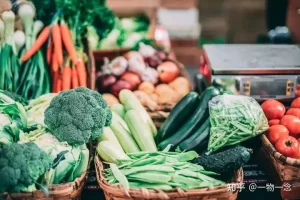Hormesis
From a philosophical perspective, “That which does not kill us, makes us stronger.” — Friedrich Nietzsche.
It turns out Nietzsche was right. This quote gets at the concept of hormesis — although with hormesis you see benefits well before approaching death! Hormesis is when something damaging or toxic in excess is actually highly beneficial in smaller doses.
The phenomenon of hormesis dates back to 1884 when German pharmacologist Hugo Schulz observed that the growth of yeast could be stimulated by small doses of poisons. The actual word “hormesis” was first used by Chester Southam and John Ehrlich in 1943 when they noticed that extracts from the red cedar tree improved the metabolism of fungal species at low concentrations.
Scientists now know that short-term acute “stress” has powerful health and longevity benefits, as long as the stress subsides at some point.
For example, it’s long been known that exercise is good for us, but it wasn’t exactly clear why. Hormesis is the likely explanation.

If you intensely exercised all day, you would cause undo wear and tear on your body and eventually break down. But short bursts of exercise (such as high-intensity interval training or HIIT) stress the body just enough to activate your survival genes. Once that stress response is engaged, your body will recover and build back even stronger than before.
An obvious example is weight lifting. Lifting weights stresses your muscles, then they get sore and grow back bigger than your baseline. But lifting too much weight too often, or at too high of an intensity, can lead to serious injury. It’s all about finding the right dose. When it comes to exercise, a dose of just 15 vigorous minutes per day can reduce the chance of death from a heart attack by 40% and all-cause mortality by 45%.
In addition to exercise, here are several other scientifically proven ways to benefit from hormesis:
Heat and cold exposure
Eat stressed plants
From drought to fungal attack to simply the threat of being eaten, plants are faced with many external stressors. But unlike humans, plants are rooted to the ground and can’t run away to escape harm.
Therefore, they produce a variety of chemicals to defend themselves. And when humans ingest these compounds, it actually helps protect us from the environmental stressors to which we are exposed on a daily basis, such as air pollution or overexposure to UV radiation

Plant-based compounds activate cellular-protective mechanisms in humans, a phenomenon known as xenohormesis. Here is just a small sampling of specific foods and drinks to consume to see these benefits:
Cruciferous vegetables such as broccoli, broccoli sprouts, cauliflower, cabbage, kale, and brussels sprouts (which contain the compound sulforaphane)
Dark chocolate (which contains catechins)
Green and white tea (which contain the polyphenol epigallocatechin gallate or EGCG)
Turmeric (which contains the chemical curcumin)
Coffee (which contains chlorogenic acid)
Red wine (which contains resveratrol — although this one is controversial since the negative effects of alcohol could outweigh the small amount of resveratrol found in a glass of wine)
Intermittent fasting
Sun and alcohol, this point is controversial, you should avoid getting sunburned by ultraviolet rays and excessive alcohol consumption
Based on these theories, we have mature products to recommend.

